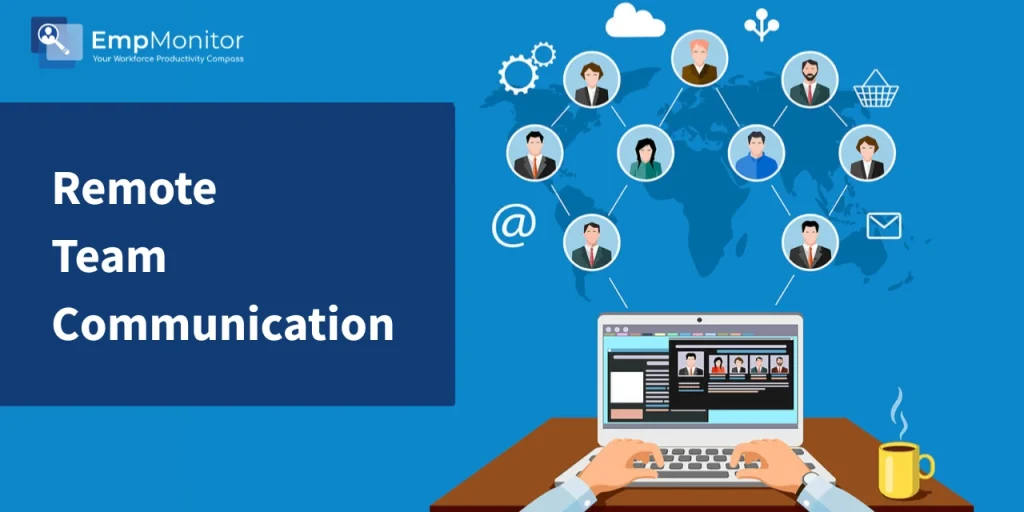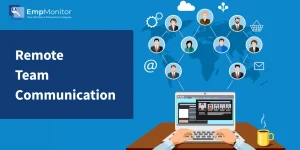Software Solutions for Remote Team Collaboration: Taming the Digital Chaos

Let’s be honest. The shift to remote work wasn’t always a smooth, well-orchestrated symphony. For many, it was more like a cacophony of endless email chains, forgotten file versions, and that one colleague who was always on mute. The dream of working in your pajamas quickly met the reality of digital disconnection.
But here’s the deal: the right software can turn that chaos into a cohesive, highly productive workflow. It’s not just about replacing the office; it’s about building something better, a digital headquarters that empowers your team to do their best work from anywhere. Let’s dive into the tools and strategies that make it happen.
The Core Pillars of Your Remote Collaboration Toolkit
Think of your collaboration stack as a digital office building. You need different rooms for different activities. You wouldn’t hold a confidential meeting in the cafeteria, right? The same logic applies here. Your toolkit should be built on a few key pillars.
1. Communication: More Than Just Talk
This is the central nervous system of your remote team. And it breaks down into two crucial, yet distinct, modes.
- Instant Messaging & Casual Chat (The Virtual Watercooler): Tools like Slack and Microsoft Teams are perfect for the quick, “Hey, got a minute?” questions. They replicate the ease of leaning over a desk. They’re also fantastic for building culture—think dedicated channels for #pets-of-the-company or #weekend-plans. This informal chatter is the glue that holds a team together.
- Video Conferencing (The Digital Meeting Room): For deeper discussions, brainstorming, or simply remembering what your coworkers’ faces look like, Zoom, Google Meet, and, again, Teams are indispensable. The best ones offer features like virtual backgrounds, breakout rooms for smaller group work, and seamless screen sharing. It’s about making meetings feel less like a chore and more like a connection.
2. Project & Task Management: Your Single Source of Truth
When you can’t walk over to a physical Kanban board, you need a digital one. This is where clarity lives. Project management software answers the fundamental questions: Who is doing what? And by when?
Platforms like Asana, Trello, and Monday.com provide a visual overview of every project’s heartbeat. They eliminate the dreaded “status update” meeting because everyone can see the progress in real-time. It’s your team’s shared brain, keeping deadlines from slipping through the cracks and ensuring accountability is crystal clear.
3. Document Collaboration: Killing the Email Attachment Monster
Remember the nightmare of “Document_Final_v2_Revised_NewEdits.docx”? Yeah, let’s never go back there. Cloud-based document collaboration is a non-negotiable for modern remote teams.
The Google Workspace suite (Docs, Sheets, Slides) and Microsoft 365 allow multiple people to work on the same file simultaneously. You can see cursors dancing across the page, leave comments, and suggest edits—all without creating a dozen conflicting copies. It’s a live, breathing document, and it completely transforms how teams create content together.
Specialized Tools for Specific Collaboration Pain Points
Beyond the big three categories, some tools address very specific, yet common, remote work headaches.
Whiteboarding and Ideation
How do you replicate the magic of a brainstorming session on a whiteboard? Tools like Miro and Mural are your answer. They offer infinite digital canvases where teams can sticky-note ideas, create mind maps, draw diagrams, and vote on concepts. It’s organized, creative chaos—and it’s incredibly effective for visual thinkers.
Asynchronous Communication
Not every team operates in the same time zone. Forcing synchronous meetings can create bottlenecks. That’s where async tools shine. Loom, for instance, lets you quickly record and share video messages of your screen, your face, or both. It’s perfect for explaining a complex bug, giving feedback on a design, or delivering a quick update without scheduling a 30-minute call. It gives people the context of video on their own time.
Choosing Your Arsenal: A Quick Comparison
| Tool Category | Primary Use Case | Popular Examples |
| Instant Messaging | Quick, real-time questions & team culture | Slack, Microsoft Teams |
| Video Conferencing | Meetings, presentations, face-to-face connection | Zoom, Google Meet, Teams |
| Project Management | Tracking tasks, deadlines, and overall project progress | Asana, Trello, Monday.com |
| Document Collaboration | Co-authoring files in real-time | Google Workspace, Microsoft 365 |
| Digital Whiteboards | Brainstorming, workshops, visual planning | Miro, Mural |
Best Practices: It’s Not Just About the Tools
Honestly, you can have the most expensive software suite in the world and still have a dysfunctional remote team. The tools are enablers, but the culture and rules you build around them are what truly matter.
- Establish “Channel Zero”: Create a clear protocol for what deserves an instant message, an email, a comment in a project management tool, or a full-blown meeting. This reduces notification fatigue and ensures important information doesn’t get lost in the noise.
- Document Everything: In an office, a lot of knowledge is transferred informally. Remotely, you have to be intentional. Use your wiki (like Notion or Confluence) to document processes, decisions, and “how-we-work” guides. This becomes the company bible for old and new hires alike.
- Over-communicate, Then Communicate Some More: It feels awkward at first, but it’s essential. Share context liberally. Assume positive intent. A little extra communication can prevent a giant misunderstanding down the line.
The Future is a Blended, Human-Centric Workspace
The landscape of remote collaboration software isn’t static. We’re seeing a move towards more integrated platforms—all-in-one solutions that try to bundle chat, video, and tasks into a single interface. The rise of AI to summarize meetings or suggest next actions is just around the corner, you know?
But at its heart, successful remote collaboration isn’t a technological problem. It’s a human one. The goal of all this software is simply to fade into the background, to become as natural and unobtrusive as picking up the phone or walking to a meeting room used to be. It’s about building bridges across digital divides, fostering trust without physical proximity, and creating a work environment where people feel connected, supported, and empowered—no matter where they log in from.
The office, in the end, was never about the building. It was about the people and the work they did together. And with the right digital foundation, that sense of shared purpose can not only be maintained… it can truly thrive.









